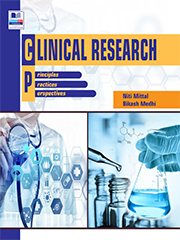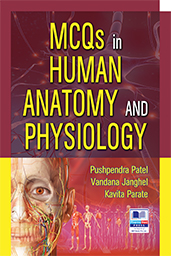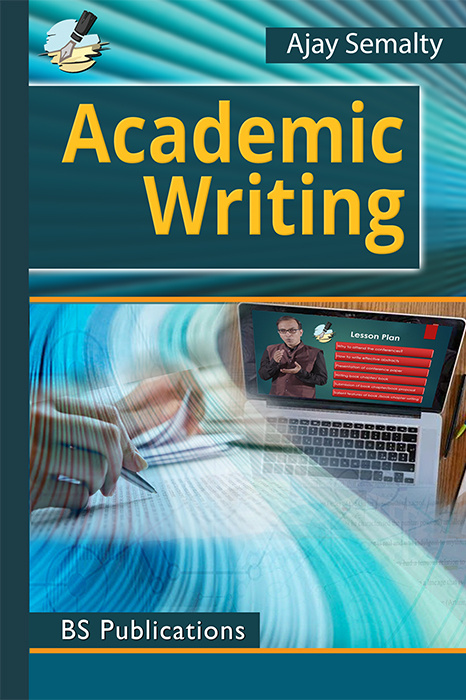
Author Guidelines
Instructions to Authors
MANUSCRIPT SUBMISSION PROCEDURES AND INSTRUCTIONS
Communication with Editor
Scope and Coverage of Manuscripts
The IJPSN (UGC approved journal) invites manuscripts dealing with broad areas and all aspects of pharmaceutical sciences, furthering research into the nanotechnology systems. All aspects of pharmaceutics, biopharmaceutics, industrial pharmacy, clinical pharmacy, pharmacology and therapeutics, toxicology, pharmaceutical chemistry, phytochemical investigations, medicinal and analytical chemistry, pharmacy administration, regulatory affairs, drug approval process, and pharmacoeconomics, pharma biotechnology, recombinant drugs, and all aspects of nanotechnology-based drug formulation design and delivery systems are considered for publication in the Journal. Manuscripts that were previously published in part or full or papers that are under consideration elsewhere are NOT acceptable.
The Journal considers the following three broad categories of manuscripts for publication:
- Research Papers: These are manuscripts predominantly devoted to reporting ORIGINAL research investigations in the pharmaceutical and biomedical sciences, including research in one of the core pharmaceutical sciences (pharmaceutics, biopharmaceutics, industrial pharmacy, clinical pharmacy, pharmacology and therapeutics, toxicology, pharmaceutical chemistry, phytochemical investigations, medicinal and analytical chemistry, pharmacy administration and pharmacoeconomics, pharma biotechnology, novel drug delivery, drug discovery; clinical trials of therapeutic agents, diagnostic techniques, behavioral, epidemiological or educational aspects of pharmacy). Papers from clinical or pharmacy practice or any related pharmaceutical topics will be considered for publication. Basic science research with pharmaceutical applications is also considered for publication. The manuscript should adhere to the following format and page limitations (see below).
- Review Articles: Review articles should contain the current state of knowledge or recent advances in the field, integrating basic background principles and practice, or summarizing with a critical analysis of the field or consensus view of controversial topics in pharmaceutical field. Review articles should provide comprehensive and updated information of the topic that and be presented in a quite useful format for researchers, students, industrial scientists, and others professionals. Broad topic areas including new drug monographs, nanotechnology or novel drug delivery systems are particularly encouraged. There is no specific structure or format for Review Articles, but it should carry major headings, subheadings and headings of topic discussions with suitable reference citations. Manuscripts must not be more than 50 single-spaced pages including references (excluding figures and tables).
- Letter to Editor - Template
Submission of Manuscripts
Online Submission via Website OJMS.
Submit your manuscript as per the instructions provided. Attach your entire manuscript as single Word file (including tables and figures). High-resolution figures should be submitted with each manuscript. After submitting your manuscript, you will receive an acknowledgement.
A scanned copy of the Copyright Form signed by the correspondent author and ALL co-authors should be submitted along with the manuscript. A PDF copy of the Copyright Form is available online (see “Instructions for Authors). Submission of a manuscript represent an assurance that the paper has received the author's institutional permissions, if any, has not been copyrighted, published, or accepted for publication elsewhere, is not currently being considered for publication in other journals, and will not be submitted to any other journal while under review and consideration by the International Journal of Pharmaceutical Sciences and Nanotechnology.
Organization of the Manuscript
Manuscripts must be in Word file using Times New Roman 12 font only, and single-spaced throughout, including references, tables, and figure legends. Manuscripts should contain the following sections in the order listed.
- Title page. This page should contain the complete title of the article, the names of all authors, and their institutional address and the address of the correspondence author. The title page should contain the following:
(a) Article title – it should be brief and convey the overall finding or nature of the manuscript or research study. Indicate on the top “Research Paper” or “Review Article” as appropriate.
(b) Authors. Names of all authors and their institutional address. Departmental or institutional affiliation should be indicated by author initials only.
(c) Running title: A running title, which conveys the sense of the full title (not to exceed 10 words) may be used.
(d) Manuscript statistics. The number of text pages, number of tables, figures, and references, and the number of words in the Abstract, Introduction, and Discussion (provide each item on a separate line).
(e) Corresponding author. The name, address, telephone and e-mail address of the corresponding author.
- Abstract. The abstract should concisely present the background of the topic, purpose of the study, research rationale, general methods, results, and conclusions. The abstract should not exceed 300 words. The abstract must be a single paragraph. Key words: Provide 6 to 10 key words of the research paper. Abbreviations: Provide a list of abbreviations used in the manuscript.
- Introduction. The Introduction section must contain a brief description of the relevant background that supports the rationale of the study. It must contain a clear description of the aims and objectives of the research paper or review article. The length of the Introduction section should not exceed 1000 words.
- Materials and Methods. The Methods or Experimental section should contain complete descriptions of all methods and procedures used in the study. They should be accompanied with suitable references, including the citation of the original source. The methods section should be organized under major headings. The name and address of commercial suppliers of chemicals, drugs, reagents, or drug samples and all equipment used must be listed in the Methods section. There is no word limitation for Methods section
- Results. The Results section should describe the experimental data and their statistical significance as appropriate. Use paragraphs with headings stating the main findings. Results should be illustrated in figures or tables. Use units consistently throughout the manuscript. Generally, units are abbreviated without punctuation and with no distinction between singular and plural forms (e.g., 5 ml; 5 mg; 5 mg/ml; 5 mg/kg etc). Sufficient data should be presented to allow for judgment of the variability and reliability of the results. Statistical probability (p) in tables, figures, and figure legends should be expressed as *p<0.05, **p<0.01, and ***p < 0.001. For second comparisons, one, two, or three daggers may be used. For multiple comparisons within a table, footnotes italicized in lower case, superscript letters are used and defined in the table legend. There is no word limitation for the Results section, but a succinct description would look better for reading.
- Discussion. The Discussion section should describe the main conclusions drawn from the findings and their relevance to the field or advancing the field. The main findings must be integrated with the current literature with a positive and negative confirmation or new findings with suitable literature references to support the new contentions or findings. The Discussion section should not exceed 2000 words.
- Acknowledgments. The Acknowledgments section should be placed at the end of the text. Personal, technical or reagent help and assistance is noted here. Grants or financial support is acknowledged in this section.
Reference formatting:
Journal article:
Authors (Year). Title. Journal name, volume, page numbers
Example:
Dharadhar S, Majumdar A, Dhoble S, Patravale V. Microneedles for transdermal drug delivery: a systematic review. Drug development and industrial pharmacy. 2019 Feb 1;45(2):188-201.
Book Chapter:
Raja A, Mahendiratta S, Singh H, Shekhar N, Prakash A, Medhi B. Nanoparticles in Chronic Respiratory Diseases. InAdvanced Drug Delivery Strategies for Targeting Chronic Inflammatory Lung Diseases 2022 (pp. 143-
170). Springer, Singapore.
Book:
Espnes GA. Salutogenesis: the Book’s editors discuss possible futures. The handbook of Salutogenesis. 2017 Jun 8:437.
Note: Websites references are NOT acceptable.
- Tables. Each table should be single-spaced and formatted as Table on a separate page. Tables should be placed at the end of the manuscript after the References section. Tables are numbered consecutively. A brief descriptive title should be provided at the top of each table.
- Legends for Figures. Each figure should be numbered consecutively and should be placed at the end of the manuscript along with legends. Legends must provide a clear explanation of each figure with brief title and other related information, including appropriate statistical markings (e.g., *p<0.01 vs. control). The type of statistical tests used may be indicated in the legend.
- Figures. Figures should be prepared using Graphing software. Each figure must be prepared at minimum 500 DPI resolution in TIFF or JPG format. Figures should be ready for direct printing without further changes. Figure should fit either in a 3.5 inch SIGNLE column or 7-inch DOUBLE columns of a printed page. Label figure files with the figure number and author name. Photos, photomicrographs, and electron micrographs must be labeled with a calibration (scale bar) in micrometers, nanometers or Angstrom units. NOTE: Color figures will be published in the online version only. The print version is set for gray scale (B&W format) printing.
List of Expert Reviewers
Each manuscript should be accompanied by a list of expert reviewers or researchers in the field. Provide at least three (3) suggested expert reviewers who are familiar with the research study and are willing to peer review the manuscript. In the cover letter, provide suggested reviewer’s name, position, institutional address and e-mail ID.
Fee. Publication is FREE. There are no page charges in IJPSN.
Manuscripts Processing. Each manuscript will be reviewed by multiple experts in the field. The reviewers are asked to evaluate the scientific merit of the study and provide suggestions for revision or improvements in the manuscript. The Chief Editor will take the final decision about the acceptance and suitability of the manuscript for publication. If the Chief Editor requests for revisions, the authors must submit revised manuscripts within the designated time (90 days), and must contain an itemized list of all changes made as per the reviewers' suggestions.
Acceptance and Page Proofs. The Chief Editor will send notification about the acceptance of the manuscript or need for a revised version. All accepted manuscripts would be forwarded to the Publisher for setting up the page proofs as per the Journal style. Page proofs will be sent to the Correspondent Author by e-mail. Page proofs should be corrected and returned to the Publisher within 5 days after receipt. Author are fully responsible for mistakes or errors in their accepted papers.
Submission Checklist
(1) Cover Letter. Submit cover letter to the Chief Editor on Institute Letterhead along with list of suggested reviewers. Cover letter is needed on institutional letterhead, signed by the corresponding author, supervisor and attested by the Principal (supervisor should attest that he/she has read the manuscript and approving it for submission to the journal). Principal should attest on the original work done at institute.
(2) Copyright Form. Provide a scanned copy of Copyright Form signed by ALL authors. Copyright form is needed with original signatures of all authors. Fill the attached copyright form and send a color scanned copy (signed by all authors on same form).
(3) Manuscript Word file. Provide Provide a single Word file with full text, tables and figures with legends. Organize the file in this order: Title page, Abstract, Abbreviations, Introduction, Results, Discussion, References, Tables and Figures with legends. Insert all Figures in the Word file along with figure legends. Figures should be prepared professionally and in JPG or TIFF format (minimum 500 dpi resolution). References. Arrange them alphabetically and check for proper citations in the text (e.g. Rao et al., 2006).
(4) Undertaking for Submission : Kindly submitted duly filled Undertaking and submit along with final submission.
Other Information
__Communication by Email. Chief Editor: [email protected]
__Publication is FREE. There is no page charge or any other fee for publishing papers in IJPSN.
__UGC-CARE Journal. The IJPSN is a Print & Online-Access journal. All articles are accessible at the website (www.ijpsnonline.com).
__IJPSN Best Paper Award. The IJPSN Best Paper Award is given annually to one excellent paper published in IJPSN. The award consists of an award plaque and printed certificate. The Award winners will be notified directly by the Editorial team.







